
23 minute read
Kid Lit
Kid
Inspired by personal experiences, the needs of kids, and their own vivid imaginations, Ford authors are penning books for children and young adults. Lit ✍
BY ANNE STEIN
With thousands of books for children and youth published each year in more than a half-dozen categories, it’s no surprise that there’s a contingent of creative Fords among the authors of those volumes. Some are full-time writers and illustrators, while others work in different fields but write an occasional book or two for children. And nearly all convey messages about everyday emotions and life situations that both kids and adults encounter.
“I find kids to be delightful—there’s a certain optimism in them that’s less present in adults, and I see that in the writing that’s produced for them,” says author Katie Quirk ’98. “Young adult and middle grade fiction can deal with some super-gritty topics these days, but there’s always this element of hope at the end that I don’t always find present in adult books.”
While there may not be a specific set of qualities needed to write children’s books, says author MacKenzie Cadenhead ’98, “the main things I find essential are having a big imagination that I’m willing to follow to unexpected places, a sense of wonder—my family teases me about how often I gasp when watching a show or reading a book— and an interest in and awareness of what actual children are like. A basic understanding of child development also doesn’t hurt.”
Teachers and former teachers who write
More than a few Haverford kids’ book authors are teachers and former teachers who have been inspired by their experiences with students.
Quirk, for example, taught for two years in Tanzania after graduating from Haverford. She returned to the United States, earned a master’s in creative non-fiction, then wrote a middle school novel set in postcolonial Tanzania, A Girl Called Problem, about a 13-year-old who saves the day. “I see that optimism about the world and what they can accomplish in young people,” says Quirk, who also taught in India and Costa Rica.
“I didn’t set out to teach something in particular, although the book does provide an opportunity to learn for the reader,” says Quirk, who lives in Maine and teaches middle and high school English and
writing. Her essays on kids and family have appeared in the The Washington Post, The Christian Science Monitor, Los Angeles Times, and other publications.
“[The book] was more about my own interests and wanting to know about that time period,” says Quirk. “I wanted the story to feel authentic. Writing’s always an excuse to do more research and learn more.”
Melanie Ellsworth ’95 grew up surrounded by books, and in her early 20s took a class on writing picture books. But it was her experience teaching English to speakers of other languages, and then working as a high school literacy specialist, that’s been the Maine-based author’s biggest influence.
“[That] helped me think about structure and the sound of our language and making a book more lyrical,” says Ellsworth. “And teaching students from other cultures helped me see that we need to see the world from others’ perspectives.”
Her picture book Clarinet & Trumpet is about friendship from the instruments’ point of view. “The book deals with how you express your individuality and yet belong to a bigger group for a bigger purpose.” Hip, Hip… Beret! is a read-aloud story and exploration of wordplay, while Battle of the Books was inspired by her daughter. “It’s from the book’s point of view, saying ‘Read me, read me.’ It’s a book about the power of books.”
“Themes of empathy and understanding are important to me,” she says, “to teach kids about being yourself, but understanding that your perspective is framed by where you are and being open to other experiences.”
There’s a time or an age that most of us relate to best. For Laurie Morrison ’03, that age is 13. “I taught that age group for 10 years,” says Morrison, who left the classroom four years ago to focus on writing and on her own kids. “I write for the 13-yearolds I knew well and the 13-year-old I was and remember. A writing teacher told me that we tend to have an age that really sticks with us. We can close our eyes and picture ourselves and feel tied to that version of ourselves. For me it’s my 13-year-old self.”
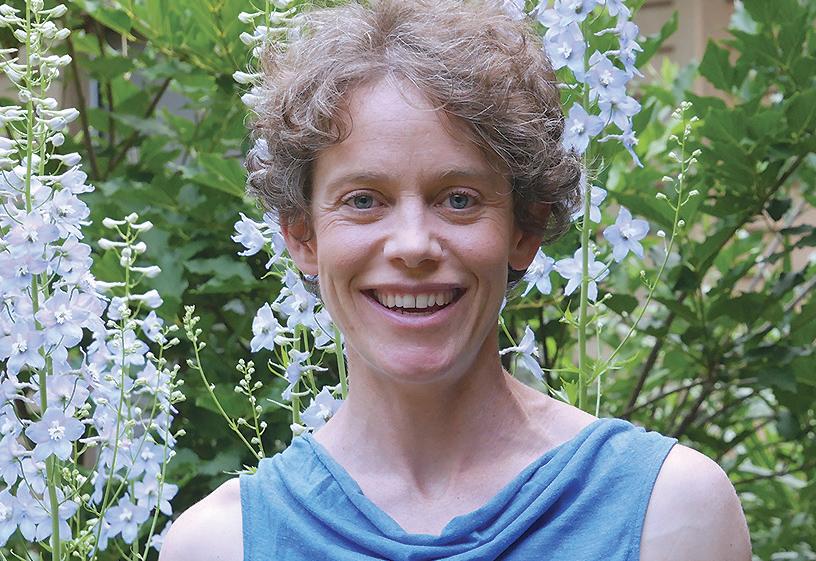
KATIE QUIRK ’98 MELANIE ELLSWORTH ’95
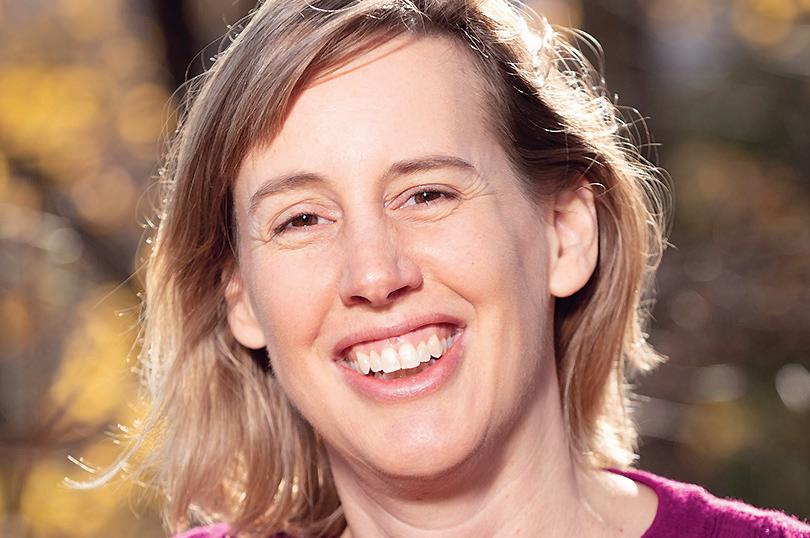
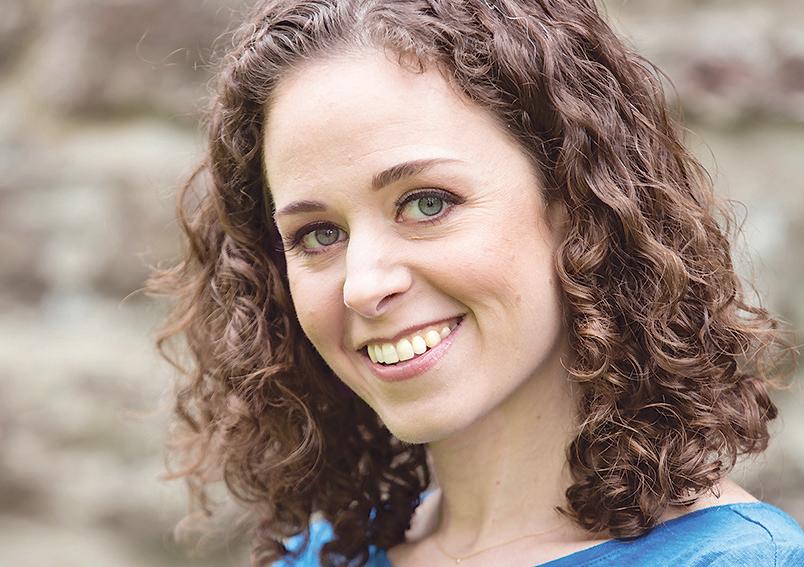
LAURIE MORRISON ’03
Kid Lit
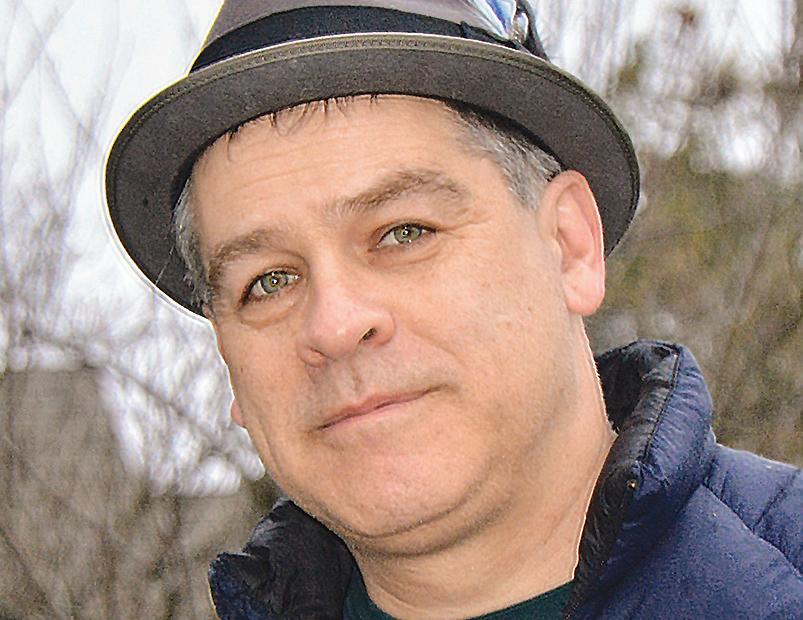
STEVEN GOLDMAN ‘86
Her three published middle grade books—Saint Ivy, Up for Air, Every Shiny Thing—are realistic and character-driven. “I tend to write about complicated emotions and family dynamics and friendships,” says Morrison, whose fourth book, Coming Up Short, will be published in June. “I’m really interested in all the shifts that happen around that age.”
“Growing up, books were huge because I could see these characters who messed up, but were still good and lovable. That’s the kind of story I always write.”
Steven Goldman ’86 has written for adults, including essays and a book on teaching. But after working in elementary and middle schools, he took a course on writing the young adult, or YA, novel. An assignment eventually turned into his teen novel, Two Parties, One Tux, and a Very Short Film About the Grapes of Wrath.
“I had a friend who came out, so it’s about the relationship between a straight high schooler and his gay friend,” says Goldman, who’s math coordinator for middle grade students at a Boston-area private school. “Now it reads like an artifact of its time (it was published in 2008) … but it’s still a question for kids.”
Goldman hopes to have a second middle grade book published this spring, about a young girl who’s so busy that she doesn’t notice her parents have been stolen by squirrels.
“Everything comes out of your own experience,” says Goldman. “My own kids, and most of the kids I teach, have really busy lives as 10-year-olds. I look at how that plays out and the consequences of that. I also look at friendships, relationships, being that age and not having a sense of who we are.”
BOOK CATEGORIES
Book categories for children and teens are constantly evolving, but here are some broadly accepted definitions.
Board books: Ages birth to 4. Thick construction, very simple language and plot. Filled with pictures/illustrations. Picture books: Ages 3-8. Themes can be more complex, filled with pictures/illustrations. Early readers: Ages 5-7. Simple, repetitive language that children can read themselves or read along with an adult, with lots of illustrations/pictures. Chapter books: Ages 6-10. Themes include fitting in, friendship, and other early school-age challenges. Middle grade: Ages 8-12. More complex plots and characters.
Upper middle grade: Ages 10-14. Even more complex plots, themes, and language. Young Adult: Younger YA, ages 13-16; older YA, ages 15 and up. Older protagonists, more mature content, complex themes and characters. Graphic novels: Using art to tell a story, often comic book style, these appeal to a range of ages and include fiction and nonfiction. —A.S.
Superheroes and superpowers
Some kids are drawn to fantasy, and some authors enjoy inventing those fantastic worlds. Charles Curtis ’04 is assistant managing editor at For The Win, a blog at USA Today Sports Media Group, and the author of two middle grade books in the Weirdo
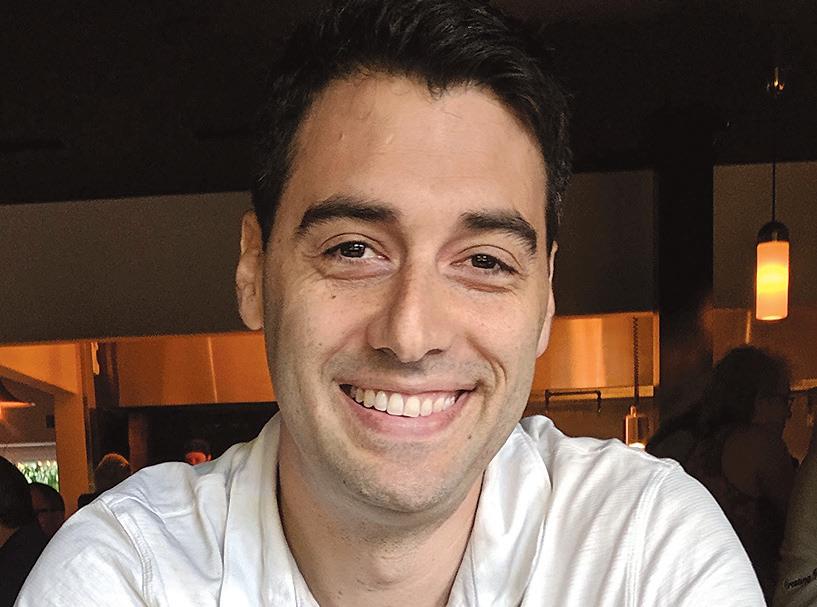
CHARLES CURTIS ‘04
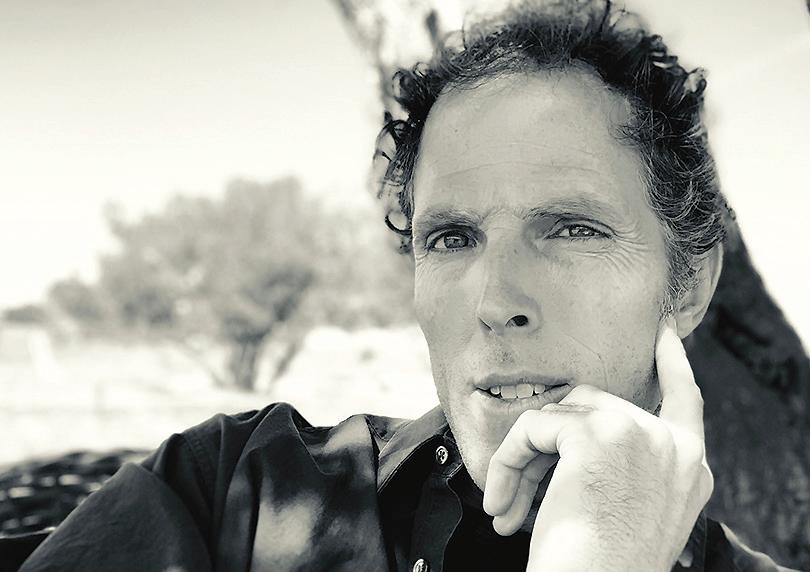
BRYAN SNYDER ‘95
Academy Series: The Accidental Quarterback and The Impossible Pitcher. Both feature average middle school boys who gain superpowers that make them outstanding athletes.
“I collected comic books obsessively growing up, and I love sports,” says Curtis, who’s based in New York City. His mom (an author) and his dad (a literary agent) kept pitching book ideas to Curtis, who figured out a way to combine his two interests.
The books are about kids who discover they have superpowers—one can throw a football like a pro, for example, while the other can fly in the air and catch a ball 20 feet up—but find that those powers create internal struggles. Is it morally right to have these powers? Should you use them for a more noble purpose? Says Curtis, “I want kids to grapple with the moral complexity of cheating in sports in general. If everyone is doing it, is it OK?”
“I hope I’ve painted a picture in my books where the characters and situations aren’t 100 percent right or wrong, and there’s a place to have that discussion.”
Outdoors enthusiast and guide Bryan Snyder ’95 has taught environmental education and written a series of adventure books for adults called Off the Map. In 2020, however, the Santa Barbara-based Snyder wrote the first installment of his upper middle grade adventure-fantasy series, The Ghost and the Greyhound.
The goal of the series is to establish empathy for alternative perspectives.
“It helps to remember that our species is just one of many on the planet with their own perspectives and values,” Snyder says.
With diversity in mind, he created a world with ghosts, bickering animals, a young boy dealing with bullies, and a talking greyhound, among other characters. “I’ve spent most of my life engaging with the mountains and the animals that live there,” says Snyder. “I think it’s valuable to see outside the realm of human creation. It’s humbling, and it’s also magical and a perspective that makes life more fun and healthy and creative.”
When MacKenzie Cadenhead was looking for steadier work after earning a master’s in dramaturgy, a friend at DC Comics gave her a stack of the company’s publications with a suggestion that she look into the world of comic books.
Cadenhead fell in love with bringing text and drawings together, and ended up working as a Marvel Comics editor for three years. She went on
Nick Bruel ’87: Bad Kitty Carries On ✍
In the Bad Kitty series written and illustrated by New York Times best-selling author Nick Bruel, the protagonist kitty confronts everyday situations, from getting a cell phone to taking a bath. So when the pandemic hit the United States, Bad Kitty confronted that in two more books: Bad Kitty Wash Your Paws and Bad Kitty Gets a Shot.
The first pandemic book “was a chance to explain pathogens and bacteria,” Bruel says. “That’s back when we didn’t know the nature of the virus.” The second was released in December 2021, around the time 5-to-12-year-olds became eligible for the vaccination. “It can help kids who are needle-hesitant, and parents, teachers, doctors, and nurses can share it with kids to ease their anxiety.”
Both books can be printed out and downloaded for free, and both are designed in black and white line art that kids can color. With an estimated 14 million Bad Kitty books in print, the two new additions join nearly two dozen picture and chapter books in the Bad Kitty series, which have been translated into 10 languages.
“I was trying to contribute what I could to this situation we’re all in,” Bruel says. “If it was the 1940s, the book would be Bad Kitty Has a Victory Garden.” —A.S.
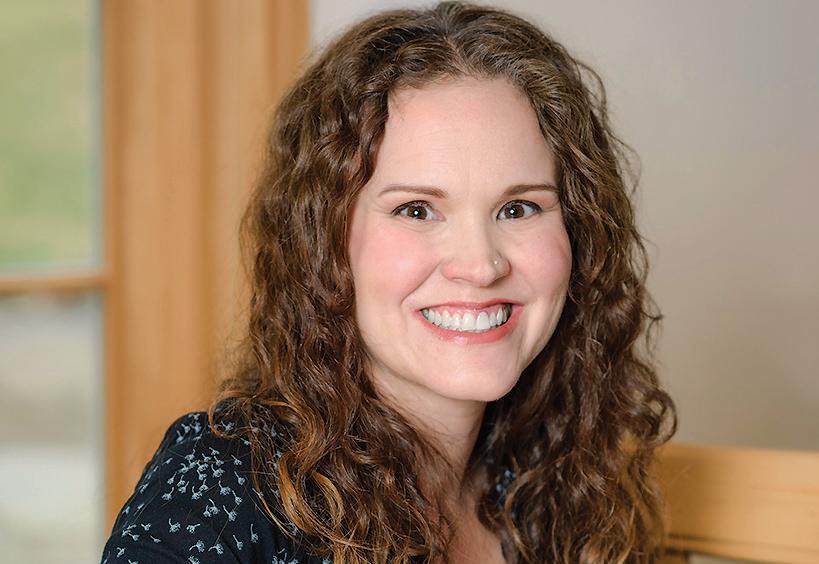
MACKENZIE CADENHEAD ‘98
Kid Lit
to another comic book company, left to raise three young kids, and now writes full-time, focusing on fantasy fiction, early chapter books.
“For me, sci-fi and superheroes create some distance to explore real challenges that these age groups face, and maybe that I still face,” says Cadenhead, who’s written four Marvel Super Heroes Adventures chapter books and two fiction books for a slightly older audience: Sally’s Bones, about a girl who befriends the ghost of a dead dog, and the YA novel Sleeper, about a girl who gains new abilities as the result of an experimental drug trial.
“There’s a lot of fun creating a world that’s different from my own. I love being able to take all those exaggerated elements and still ground the story in relatable problems for characters.”
With every story, she says, “I’m showing how characters can grow and change. They always feel a little out of step, and the stories are very much about their journey to find internal understanding of what’s been off, making peace with, and finding strength in who they are.”
Los Angeles-based video game entrepreneur Andy Gavin ’92, a longtime history buff, loves creating mysterious worlds. “I’m obsessed with the assumption that if you study enough history, you’ll understand where people come from and why they do what they do, but that’s impossible, of course.”
His two self-described “dark, historic fantasy” novels for young adults are grounded in history. The Darkening Dream is set in 1913 Salem, Mass., where the book’s teenage heroine has an ominous vision and is propelled on a quest that sends her into the town’s brutal factory workrooms and to Solomon’s Temple. For Untimed, about a boy who travels from modern-day Philadelphia to 1725 London and eventually into the future, Gavin spent months reading about Ben Franklin and 18th-century life in London. But he combines that history with plenty of supernatural elements. “My style’s dark and humorous and at the same time, realistic and fantasy. I like contrast. There’s a lot of weird stuff going on, from Byzantine Vampires to killer clockwork robots, but I try to ground them with a gritty realism and historical themes.”
R.W. (Bob) Alley ’79: Paddington Bear and Beyond ✍
Award-winning author and illustrator R.W. (Bob) Alley wrote his first children’s book, The Ghost in Dobbs Diner, soon after graduating from Haverford. Since then, Alley has illustrated more than 150 books, and he’s both written and illustrated 15 more, including Gretchen Over the Beach and Mitchell On the Moon. Alley is best known, however, for illustrating the beloved children’s book series about Paddington Bear. For the past few years, Alley has continued his Paddington work and has been writing and illustrating his own series of picture books. “They’re a combination of fiction and nonfiction, sort of explaining to kids how things work,” says the Rhode Island-based Alley. “The main character is an animal who’s a writer. He’s trying to write a comic book about heroes and through a series of mishaps, gets involved in a sea, air, and fire rescue squad.”
Alley likes using animals to stand in for humans, he says. “Because people make so many suppositions about human characters, that can get in the way of a story being accessible to as wide a range of [readers] as possible.”
Alley’s approach to writing and drawing is meticulous. “There are so many sketches and so much writing that never see the light of day because you have to teach yourself about the characters, plot, and landscape you’re working on. You have to know so much more than you’re ever able to convey in the book.” –A.S.

Parents who write with a message in mind
In the daytime, Robert Jones ’04 is an operations manager for a warehousing and distribution company near Atlanta. But at night, the father of three is a storyteller to his children, ages 9, 7, and 1.
Several years ago, his oldest child challenged him to write his stories down, insisting they weren’t real unless she could see the stories in a book that she could hold in her hands.
The result is Happiness: A Lesson with Lulu, a picture book “about a little girl who wakes up sad and goes on an exploration with her dad to find out what is happiness,” Jones explains.
“I was a philosophy major, and I’ve always been interested in helping point kids in the direction of larger questions that don’t have clear answers.” His second children’s book, The Light, also explores life’s big questions. “I think every parent is a storyteller in some way, but not every parent has a child who challenges them to turn those stories into something they can hold in their hands.”
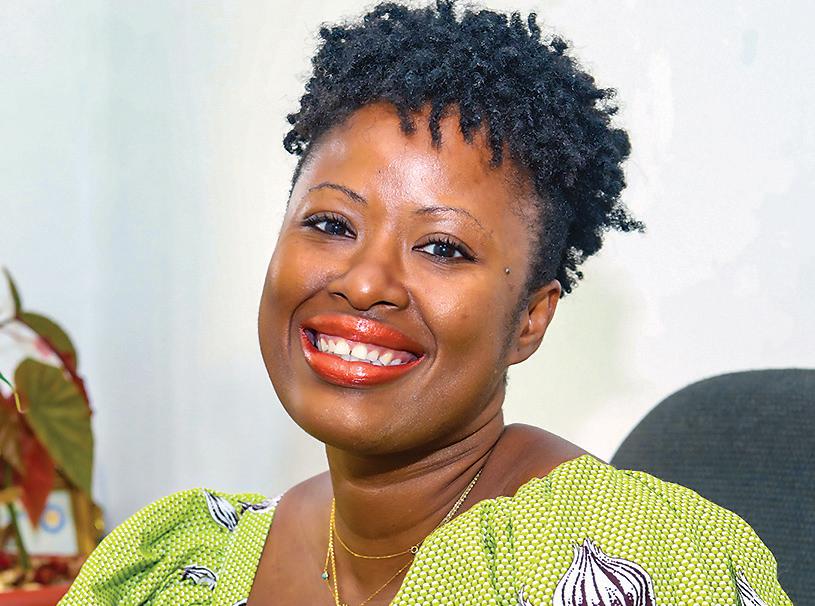
VICKIE REMOE ‘06
When Vickie Remoe ’06 moved back to Sierra Leone at age 22 after a 10-year absence, she dove into media. Armed with a master’s in journalism, Remoe eventually started a marketing firm, began writing and reporting for her own news site, and hosting a TV show.
When her son was born six years ago, she read to him, but by age two he complained that his board books didn’t make sense. “If you’re growing up in West Africa, the content didn’t connect,” she explains. “He doesn’t play baseball, and he doesn’t have a friend named Peg.”
Remoe began writing stories with vowel sounds and words that were Sierra Leonean inspired. She shared them with her sister-in-law, a Harlem kindergarten teacher, and a friend who taught in Brooklyn. “They said it was really great content, especially when we don’t have early readers with African themes.”
In the past two years, Remoe has published two early readers aimed at helping children with short vowel sounds. Adama Loves Akara is about a father and daughter who read together and enjoy akara (a banana fritter). A Print for Ami is about a young girl who visits a seamstress for her first traditional dress.
“Both books celebrate everyday life, especially for people in the diaspora,” Remoe says. “I also wanted to write the stories for my son to share his culture and to see himself represented.” Her next book will be an alphabet book representing local life and culture. “A is for akara, Y is for yam. So if you’re a child growing up in rural Sierra Leone, these are things a child who’s learning English and a parent who’s teaching them will see every day.”
Soon after the first of their three daughters was born, Kendra Ocampo ’04 and her wife ClaireVoe Ocampo started reading to her. “We’d go to the library and bring books home, and the majority featured a traditional family structure of mom, dad, and child,” explains Kendra. “At first we’d say, ‘Oh, there’s the mom and the mommy.’ She was so young she thought the family in the book reflected our family. But we realized that wouldn’t last long, and she’d start asking questions.”
ADVICE FROM HAVERFORD AUTHORS
on writing for children and teens
❋ Be brave and write. Don’t worry if you think no one else will care or that your work will potentially offend someone. ❋ Learn about the industry, go to conferences, and join the Society of Children’s Book Writers and Illustrators. ❋ Don’t be afraid to write about your own culture and truth. It brings more humanity and representation to the world. ❋ Let go of your inner editor, the voice that says, “That’s not a good idea.” ❋ Having writing partners or a group can be really wonderful. It holds you accountable, and you feel like you’re not writing into a void. ❋ Read a lot, and widely, and read recently published books. If you want to be traditionally (rather than self) published, you need to have a sense of what’s being acquired and sold right now. ❋ Analyze the books you love. Look at the length of sentences and chapters, the symbolism, and figure out what makes this resonate for you so you can do the same kind of things. —A.S.
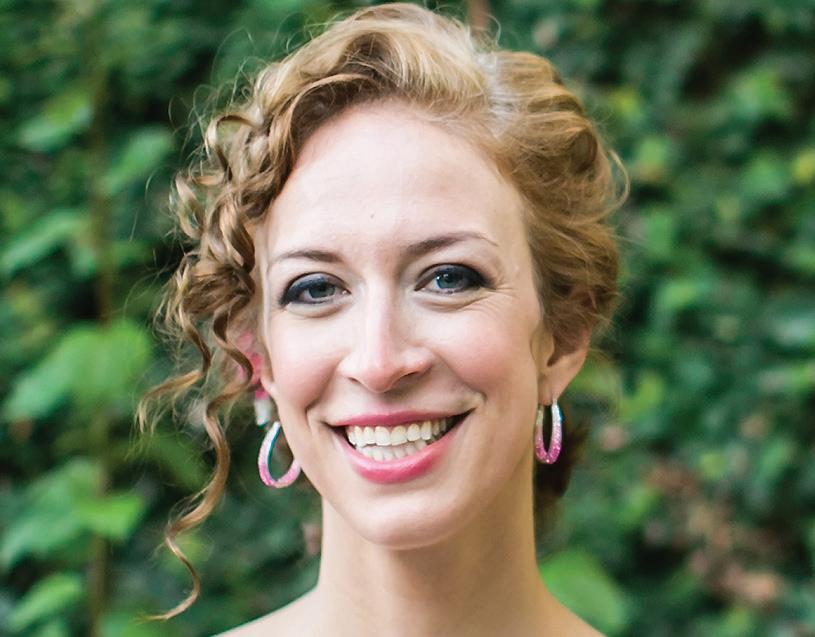
KENDRA OCAMPO ‘04
Kid Lit
The couple found books aimed at LGBTQ families but “there was always a conflict involved with having two moms or two dads. The other types of books had animals portraying two moms or two dads. We felt what was missing was an LGBTQ family that’s like other families, with the love, craziness, joy, and dynamics.”
So Kendra, a consumer researcher, and Claire, an events planner, wrote a story, hired an illustrator, and published Mighty May Won’t Cry Today. The picture book features a child with two supportive moms and a typical kid issue: whether it’s OK to cry.

J. PHILIP MILLER ‘59
SELF-PUBLISHED VERSUS TRADITIONALLY PUBLISHED: TWO STORIES
Some writers self-publish, which is easier these days with myriad online resources to help. Others find an agent who shops the book to publishers, or they go directly to publishers themselves. The pluses and minuses of each are explained by two Haverford authors:
Charles Curtis ’04, author of The Accidental Quarterback and The Impossible Pitcher
I used a publisher. My agent sold my book to a small children’s/YA publisher with a middle-grade imprint. The pros there were experts in editing and marketing those books, and knew how to shape the book and sell it. The con of selfpublishing for me was the idea of hustling to be my own editor/marketer/seller/social media manager, and the fact that I had a full-time job to do beyond the books was daunting.
Vickie Remoe ’06, author of Adama Loves Akara and the forthcoming A Print for Ami
I think the pros of self-publishing are that for stories like mine, which are about my culture, I don’t have to seek approval or validation from anyone to put them out into the world. Traditional publishing, especially in the United States, isn’t the most diverse. Publishers don’t always have people on their team who understand the global Black diaspora.
I learned how to self-publish on my own, learned how to find an illustrator, and did it all remotely. Within three months of self-publishing I landed an interview on BBC Focus on Africa.
We can’t let not having a publisher stop us from getting our stories out there. Whether it’s a children’s book or a film, if you have a story to tell, especially if it’s about a culture or community or way of life that’s underrepresented in the mainstream, you must get it out. —A.S.
“We looked around to see what was out there in other picture books and LGBTQ books and found this was a newer theme to tell.” And yes, May cries— and her moms tell her it’s all right.
J. Philip Miller ’59 has a long resume in children’s television, producing and directing several children’s shows, receiving Emmy and Peabody awards for his work, and writing a song for Sesame Street. He also has extensive experience teaching, from the elementary to college level.
But it wasn’t until retirement that Miller wrote his first children’s book, Milo Meander. “I’d been living in Cambridge, and I used to walk around the neighborhood and say hello to people, and I got very limited responses from my neighbors. That stuck in my mind,” says Miller, who splits his time between Cambridge and an island in Maine. “One morning I woke up with six characters in my head that rhymed. I went to my computer and started writing.” As Milo Meander walks down the streets, / He gets the cold shoulder from each neighbor he meets. / Sam Snoozle, Sir Schlupp, and Miss Macy Bly, / Fred Frigate, Gumby, and Pudge pass him by. / But Milo learns how to break through the ice, / To discover his neighbors are really quite nice.
Miller is currently working on his next book, about a child’s narrative memory of a grandfather.
The Super-specialists
Some authors write children’s books based on their academic expertise. Early in her career as a Bostonbased pediatrician, Anne Light ’00 became interested in children’s learning and brain development. “I was learning about reading and how it sets up kids for success, and how it’s so critically important to young
brains,” says Light, who today is medical director of the Orange County, Calif., Social Services Agency.
Studies show that when caregivers read to children from a very young age, they expose kids to language-rich interactions that encourage brain development. Those interactions also help build more stable and nurturing relationships that promote healthier, more resilient children.
But how you read books to kids is important, says Light, who in 2010 wrote Sundays Are Rainbow Days, based on dialogic reading, which increases early language development by teaching parents how to have simple conversations with children on every page of a book. (Light includes questions for parents in her book.)
If there’s a picture of a red ball, for example, adults can ask what other things are the same size or color, and what you do with them. “You are building the ability to contextualize ideas in your child’s brain, which drives language development and cognitive development,” she says. “And you’re sitting quietly and cuddling.”
When Baltimore-based school psychologist Shira Levy ’04 earned a second master’s degree in 2014—her first was in psychology, her second in applied positive psychology—she adapted a different approach to children’s mental health. The result of her master’s research was her co-authored book aimed at 8-to-15-year-olds, Stan and the Four Fantastic Powers: The First Ever Appreciative Inquiry Book for Kids.
“Appreciative Inquiry (AI) is the science behind how people can thrive in life, of what makes us live meaningful lives,” explains Levy. “It works in conjunction with traditional psychology, which tends to focus on identifying disabilities, and is more of a problem-solving model. I found I could get further with my students at school if I helped
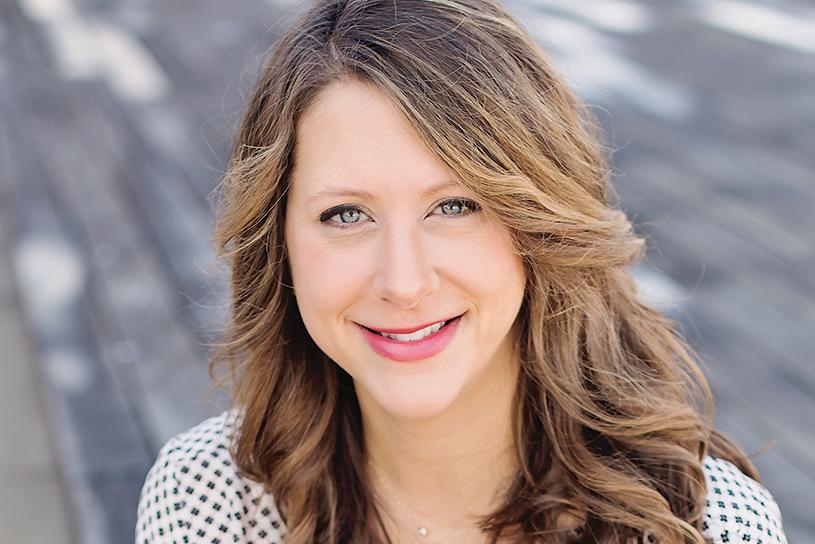
SHIRA LEVY ‘04
Sara Levine ’89: A Picture Book Approach to Science ✍
When author Sara Levine shows up for story time, the veterinarian and biology professor carries animal teeth, bones, and even a human skeleton to bring alive her science books for young children.
“It’s almost a gift to introduce someone to a concept for the first time,” says Levine, who writes mainly for kindergarten through third graders. “My books are attempts to teach science topics that haven’t been shared in a picture book level in new and interesting ways,” she says.
Levine has always had dual interests. She’s taught science and nature courses to kids, earned her veterinary medicine degree, then earned a master’s in creative writing. She also taught science to future elementary school teachers before writing full-time.
Her first picture book, Bone by Bone: Comparing Animal Skeletons, came out in 2013. It was followed by Tooth by Tooth: Comparing Fangs, Tusks, and Chompers; Fossil by Fossil: Comparing Dinosaur Bones; and Eye by Eye: Comparing How Animals See.
Levine has eight published books and another four coming out. Her agent is also shopping a middle grade graphic novel about the carbon cycle and its relationship to climate change. “We need to get that information to that generation if we want to make changes,” Levine says. —A.S.
them understand their meaning and purpose, as opposed to focusing on their problems.”
Although AI is often used in business, Levy’s book is about a kid named Stan and his friends, who focus on imagination, teamwork, and goal-setting as they design a new school playground. “My real goal with the book was to help kids understand their strengths and know how to use them, so they can improve their well-being and future outcomes.” Anne Stein is a Chicago-based journalist and regular contributor to Haverford magazine. Her features have appeared in the Chicago Tribune, The Christian Science Monitor, the Los Angeles Times and ESPN, among other places. Favorite books from her childhood include Winnie the Pooh, Harry the Dirty Dog, and A Wrinkle in Time.







